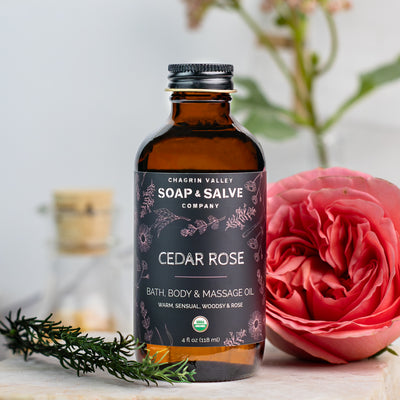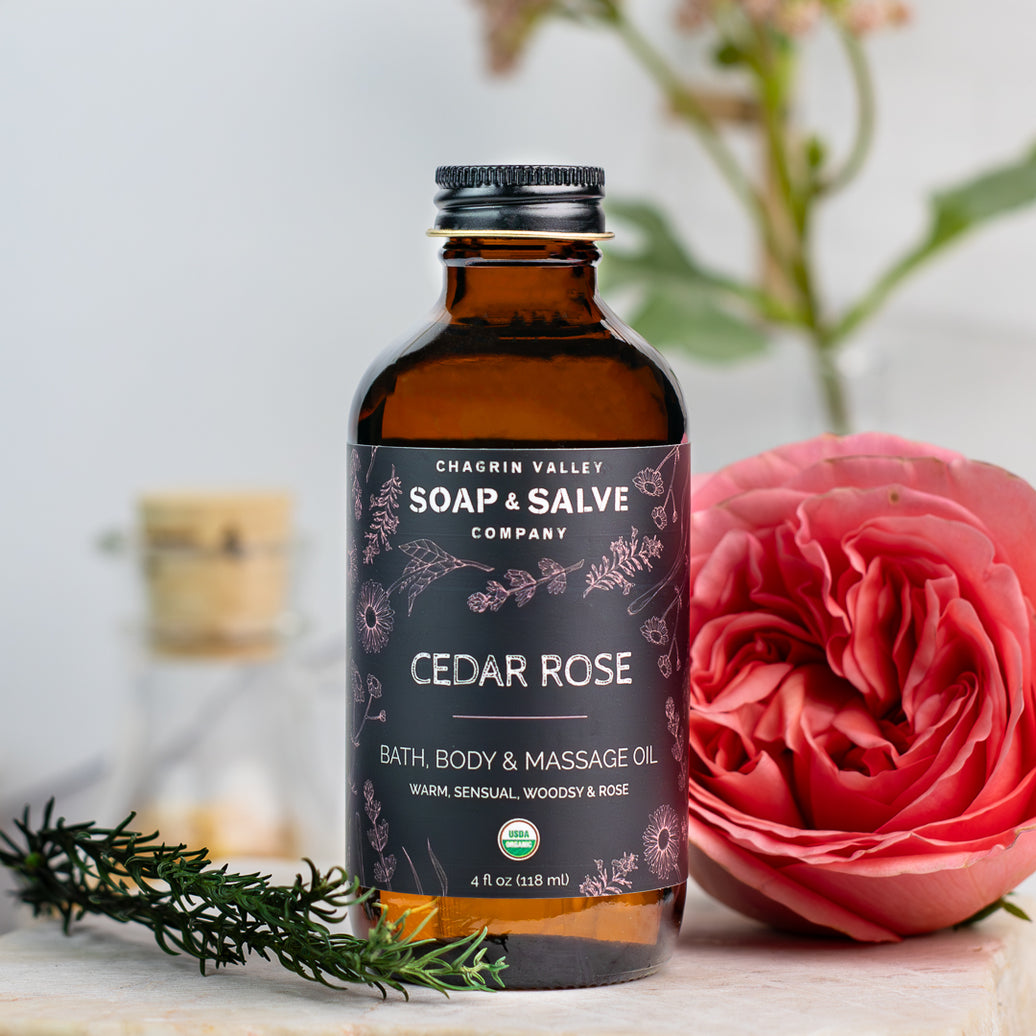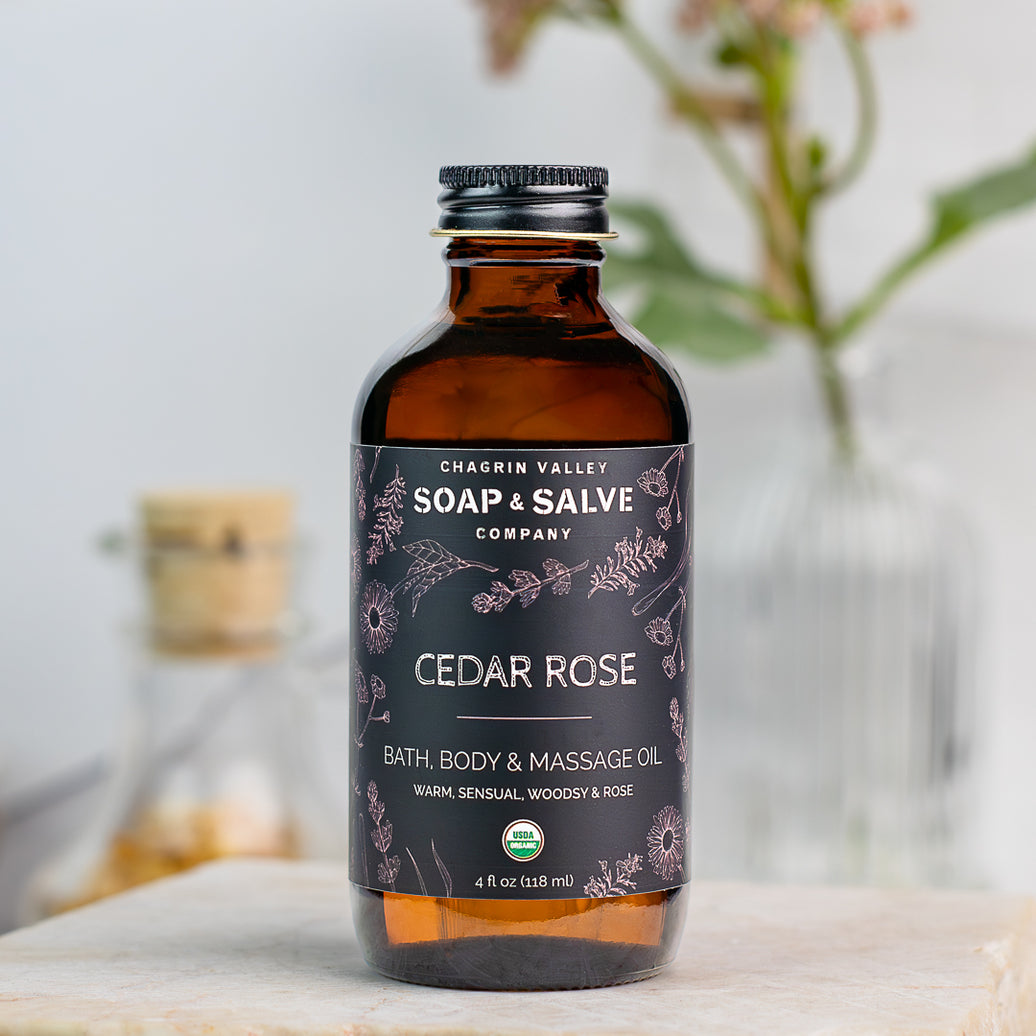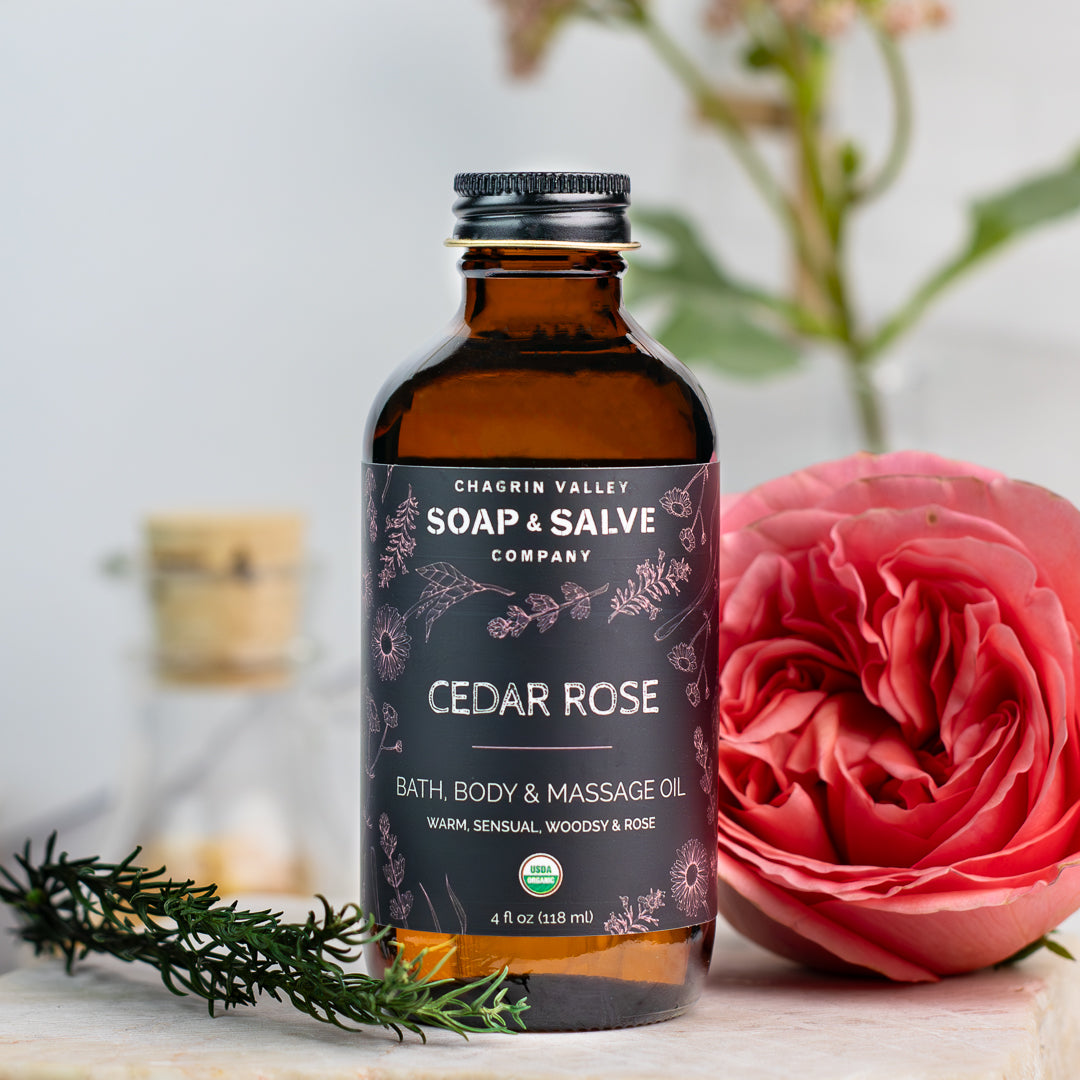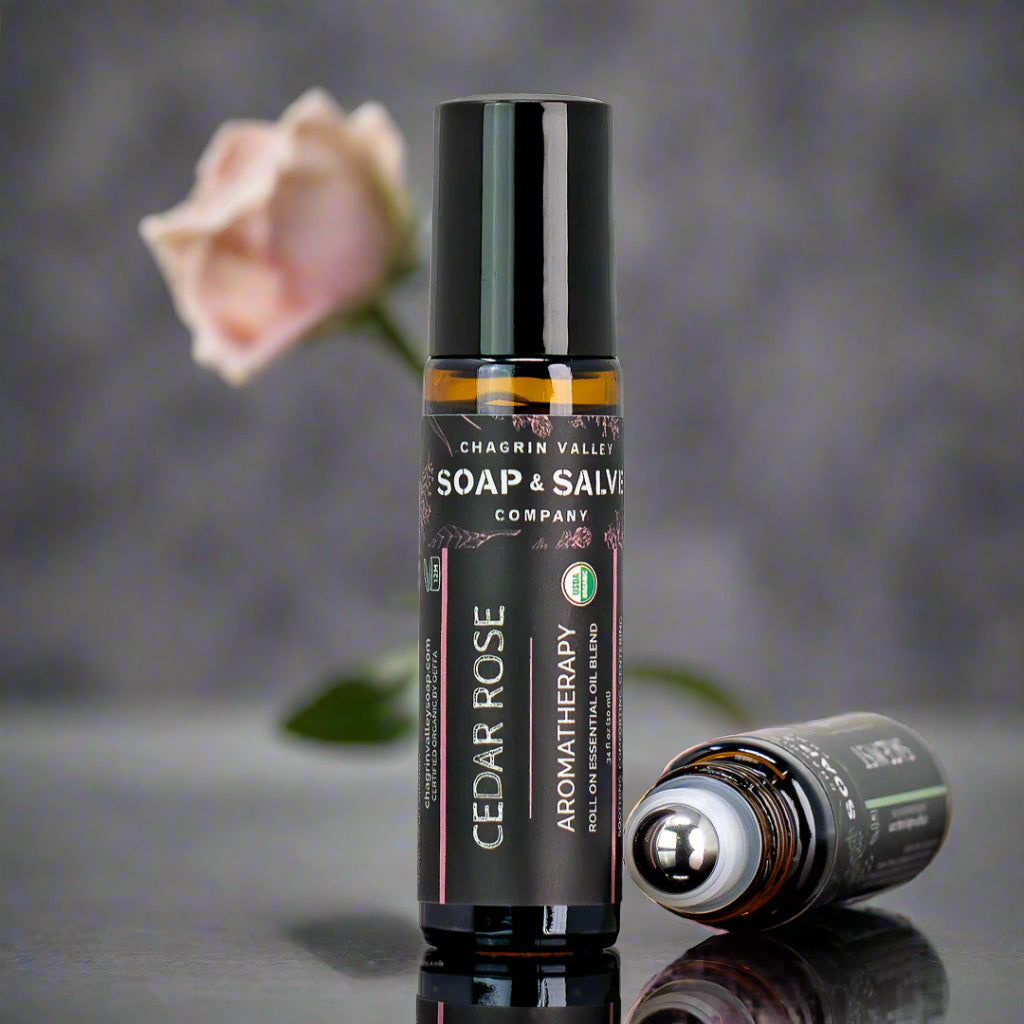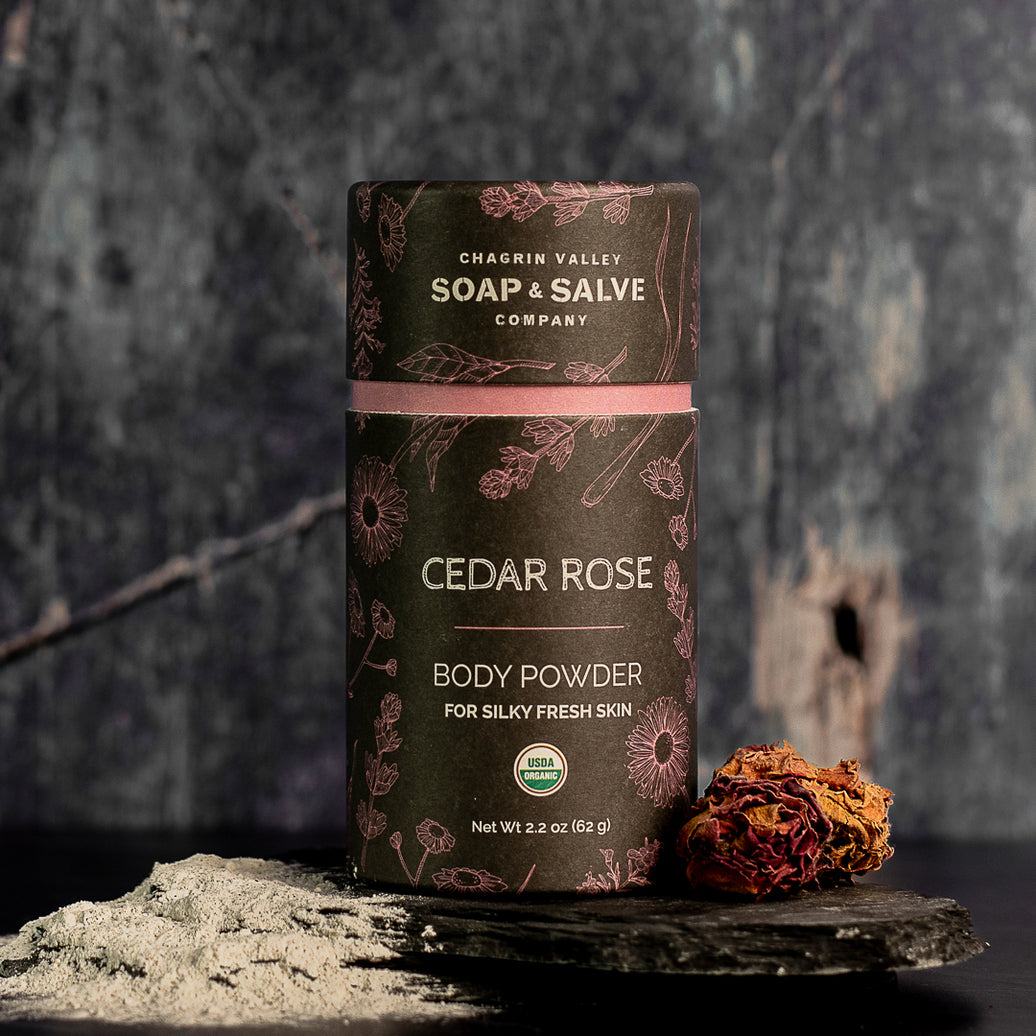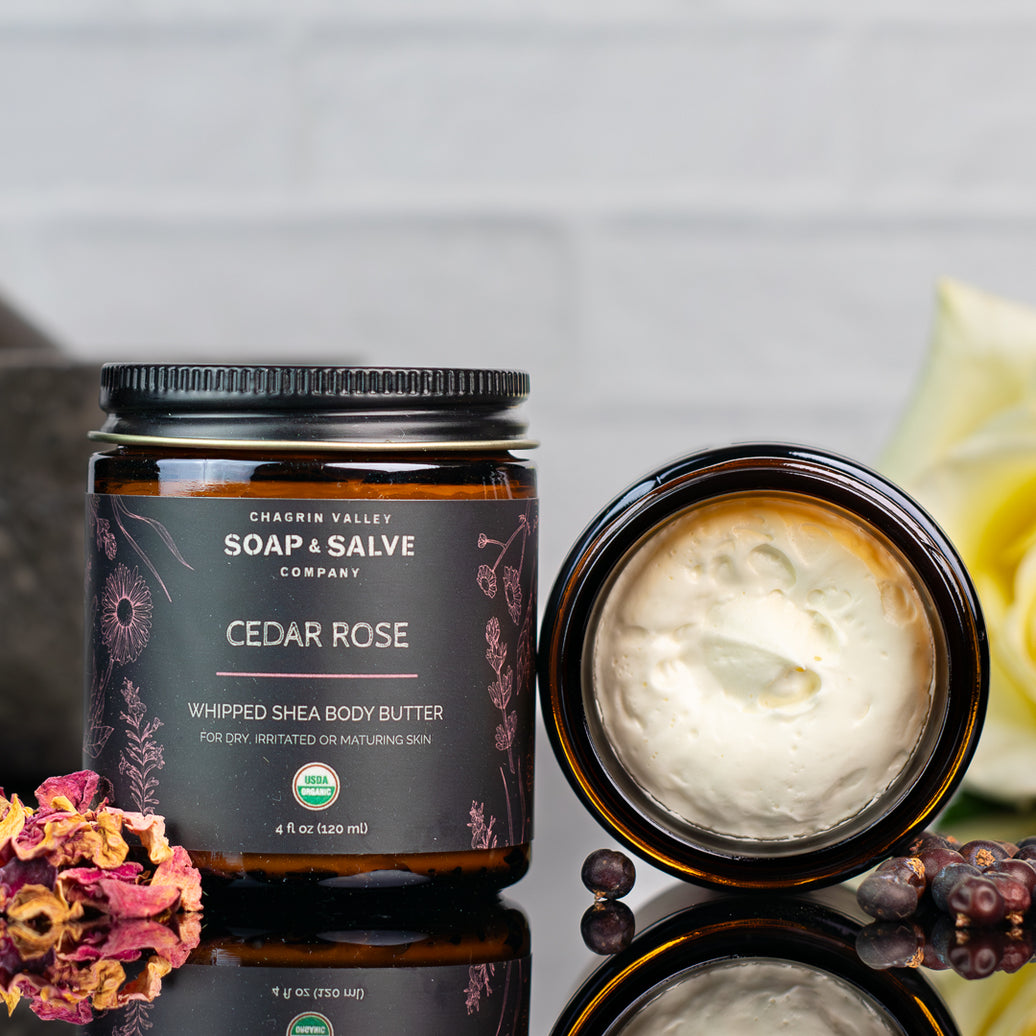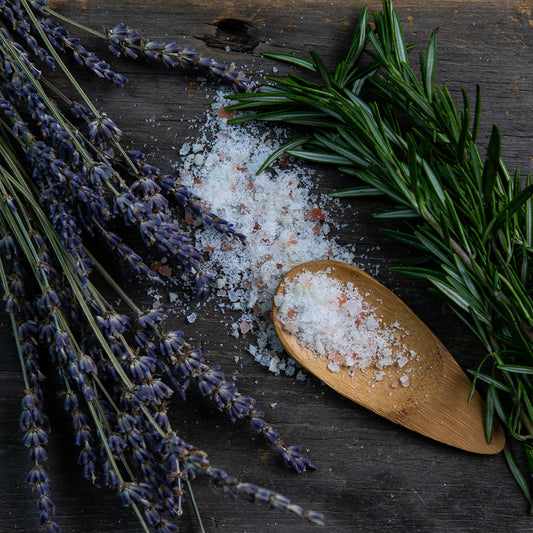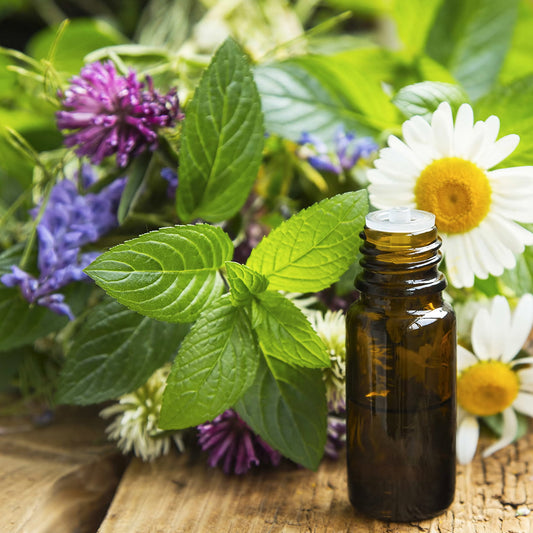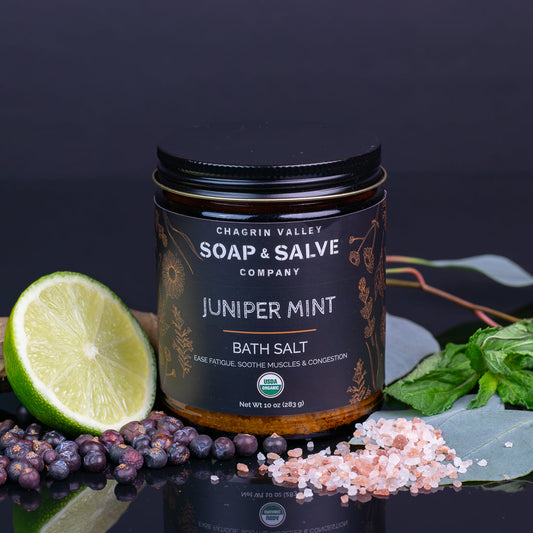
Bade- und Körperöl: Cedar Rose
Bade- und Körperöl: Cedar Rose
Gönnen Sie sich Momente purer Entspannung mit einem hautpflegenden Körper- und Badeöl. Noten von Zedernholz und Rose verschmelzen harmonisch zu einem betörenden Duft, der Emotionen erdet und ausgleicht, die Stimmung hebt, positive Gefühle weckt und geistige Klarheit fördert.
- Out Of Stock






Product Overview
Are you looking for warmth and comfort?
Have you spent most of your day taking care of everyone else? Now it is time to pamper yourself! Treat yourself to a few moments of pure serenity with this unique blend of organic oils, skin-loving botanicals, and essential oils that combined with the beneficial effects of a warm bath or massage help calm the mind and relax the body.
Whether you massage it directly on your skin, add it to a warm bath or use it in your shower, our enchanting Cedar Rose essential oil blend harmoniously combines notes of cedarwood and rose into a nurturing and captivating aroma to help ground and balance emotions, lift the spirit, stimulate positive feelings and promote mental clarity.
Moisturizing Oils
- Nutrient-rich Organic Sunflower Seed Oil is an easily absorbed, light, and highly moisturizing oil that helps soothe irritated skin conditions, promotes smoother skin, and is good for all skin types.
- A rich source of fatty acids, Organic Unrefined Evening Primrose Oil is a soothing, moisturizing, and nourishing oil, especially for a massage that helps ease irritated skin conditions like eczema and is exceptional for dry, aging skin.
- One of nature's most effective natural moisturizers, Organic Jojoba Oil is a natural liquid wax with a chemical structure similar to that of our natural skin oil and is a good choice for all skin types. Its anti-inflammatory properties help ease irritated skin conditions like eczema and psoriasis.
- Moisturizing Organic Unrefined Sweet Almond Oil, a soothing, lightweight oil, is easily absorbed leaving the skin soft and smooth. This slippery oil is popular for massage since it allows hands to glide easily over the skin.
Each of the infused organic botanicals adds its own unique properties to this relaxing oil. For more information on each botanical, click on the name in the ingredients list!
Essential Oils
- Aromatherapy: The floral and woodsy scent of Lavender creates a serene and relaxing atmosphere that promotes a restful night’s sleep or stress relief at any time. Skin Care: Lavender oil can help ease, soothe and promote the healing of irritated skin conditions. It is useful for acne, oily skin, burns, sunburn, eczema, psoriasis, and insect bites.
- Aromatherapy: The calming and uplifting aroma of Palmarosa is a soft, rose and geranium-like scent that helps balance the emotions, ease stress and relax the mind. Skin Care: Palmarosa, good for both dry and oily complexions, hydrates, and helps improve the appearance of dull, listless skin. The anti-inflammatory properties may help ease irritated skin conditions.
- Aromatherapy: The penetrating aroma of Ylang Ylang promotes relaxation, calms anxiety, helps improves mood, and stimulates positive feelings. Skin Care: Ylang Ylang is a balancing oil good for all skin types. Its antiseptic properties make it helpful for acne-prone skin.
- Aromatherapy: The uplifting scent of Sweet Orange brightens and warms your mood, calms, clears the mind, and reduces stress. Skin Care: Sweet Orange helps stimulate microcirculation to improve the appearance of dull skin. It balances skin oil production to help oily and acne-prone skin.
Use this enchanting organic natural body oil as a bath oil, an all-over body massage, or an after-shower moisturizer to lavish your skin with love.
- All Natural, Certified Organic, Vegan, Cruelty-Free, Non-GMO
- Aromatherapeutic essential oil blend helps relieve tension with its soothing, calming, and harmonizing effect on the nerves
- Moisturizing oils and botanicals nourish skin, leaving it feeling silky smooth, soft, and radiant
- A spot treatment for stress--massage into temples or other pulse points for a blissful treat
For a moisturizing after-shower treat, add a sprayer available on our Accessories page!
While body lotions may contain some moisturizing ingredients, they are mostly made of water (notice the first ingredient listed). Our body oils can be used from head to toe instead of lotion.
If you enjoy the application "feeling" of a lotion, try massaging our body oil into warm, damp skin right after a bath or shower. Wait a few moments and gently pat dry. (Do not rub the skin dry!)
How To Use
Simply put, a body oil is an oil used to soothe, nourish, and hydrate the skin on the body. But as you read more about how to use it, you will realize that a natural body oil is one the most versatile products you can include in your skin care arsenal.
As a Bath Oil
For a skin-softening fragrant bathing experience you can make any bath time feel like a day at the spa by adding a bath oil to your warm bath. Soaking in warm water helps make the skin more pliable and opens the pores by loosening the dirt and debris which is easily washed away.
A warm water bath also helps skin better absorb moisture, helps relax your body and mind, ease stress, calm the soul, balance emotions, arouse your senses, relieve fatigue and soothe sore muscles.
Bathtub sizes vary, but we usually recommend adding 1 to 2 tablespoon of oil to warm bath water. Then slide into the tub, relax and allow the oils work their magic. Be careful because the oils can make the bath slippery.
Some suggestions from our bath-loving customers and family:
- Add the oils while water is still running in order to distribute the product more evenly.
- Run the bath first and add the oil to the still water, creating a little puddle of aromatic oil to slide into. You can then rub some bath oil into your skin.
- Rather than placing the oil in the tub, pour a bit into your hands and massage it gently onto the skin before getting into the tub. Focus on areas that may need extra care, such as dry elbows and knees.
- If using an aromatherapy bath oil be sure to take some deep breaths in order to reap the benefits from the essential oils.
- After a bath remember to pat (not rub) the skin dry.
A bath before bed is one of most effective ways to slow down your mind and unwind. Soaking in warm scented water helps muscles release tension. When you step out of your oil-infused bath, you will notice a difference in your skin, your body and your mind. If your skin is very dry or irritated, pat your skin dry a bit and follow up your bath with a light massage of oil on damp skin.
Herbal bath oils are perfect all on their own but anytime you prepare a bath you can combine bath oils with other great skincare products like our Simply Salt Bath Salt or Bathing Herbs.
For The Shower
No time to bathe or don't have a bath tub? No worries! A body oil can be used before your shower, in your shower, or after your shower. Always be cautious of slippery shower tubs!
Before the Shower: If you suffer from very dry or irritated skin, pour a bit of oil into your hands and massage it gently into the skin. Allow it to sink in a minute or two before stepping into the shower. Focus on areas that may need extra care, such as dry elbows and knees. Cleanse your body as normal.
The oil creates a barrier between your skin, the water, and the soap to help mitigate some of the moisture loss. If using an aromatherapy oil, cup your hands, bring them close to your face and take a deep breath in and out before stepping into the shower. If desired you can follow up with a bit of oil after your shower.
In the Shower: Apply the body oil right in the shower as the last step in your routine. For ease of use, I suggest placing some bath oil into a spray or squirt bottle. After cleansing your skin, squirt a bit of oil into your hands or spray it directly on your body. Massage it gently into the skin. Allow the oil to sink in a minute or two. You can then give your body a quick rinse or just step out of the shower. Pat skin dry.
After the Shower: One of the most common and highly recommended ways to use a body oil (or any moisturizer) is to apply it immediately after a shower or bath. Since our skin absorbs some water during a shower, it is important to take advantage of the small window of opportunity after cleansing, about 15 minutes, to seal that moisture into the skin.
Simply put a few drops in the palm of your hand (a little goes a long way), rub your hands together to warm the oil, and massage it into your warm, damp skin. Allow a minute for the oils to penetrate. Gently pat skin dry so as not to rub off the moisturizing oils.
As a Body Oil
Technically all of the methods discussed in this blog are ways to use a natural oil on your body. While typically the best time to apply body oil is when the skin is warm and slightly damp, you can apply body oil at any time of the day to add a targeted boost of hydration to the skin whenever needed.
Give those extra dry places, like dry elbow, heels, and knees a bit of extra TLC by massaging in a few drops of body oil on dried skin.
When applying body oil to dried skin, some people like to mist skin with a bit of warm water and then apply the oil. You can also moisten your hands.
As a Massage Oil
I cannot say enough about the benefits of massage. Massage can boost circulation, ease away tension, and works wonders on sore or tired muscles. If using an aromatherapy body oil you will experience the benefits of both topical and inhalation aromatherapy.
Whether you are massaging yourself or someone else, pour a small amount of oil into clean hands and allow it to warm up between your palms. You can also place the bottle in some warm water before dispensing.
Massage into skin using long, slow, gentle movements in circular pattern. Take a few deep breaths as you apply the oils and feel the tension slip away.
A warm massage oil feels amazing.
- a warm massage oil containing essential oils will have an increased rate of penetration of those oils most likely due to the increased blood flow caused by an increase in temperature
- massaging the area where the oil is to be applied can boost circulation and increase absorption
Even More Ways To Use a Bath & Body Oil
- Apply body oil before you shave anywhere. It protects the skin against razor burn and allows for a closer, smoother shave.
- Use a moisturizer after you shave.
- If using body oils scented with pure essential oils, take advantage of their aromatherapeutic healing powers. Special blends can ease stress, relieve headache, help with mind and body fatigue and much more. Rub a drop of aromatherapeutic oil on your temples, neck or other pulse points. Place some on your wrist to use as a "sniffing" spot.
- Use a few drops to revive and smooth dry or frizzy hair.
When using in bath or shower, always take care as your bath may become slippery.
If you have very sensitive skin or are simply trying a new product for the first time, we always recommend doing a patch test.
For external use only. Discontinue use if irritation occurs. Best if used within 6 months of opening.
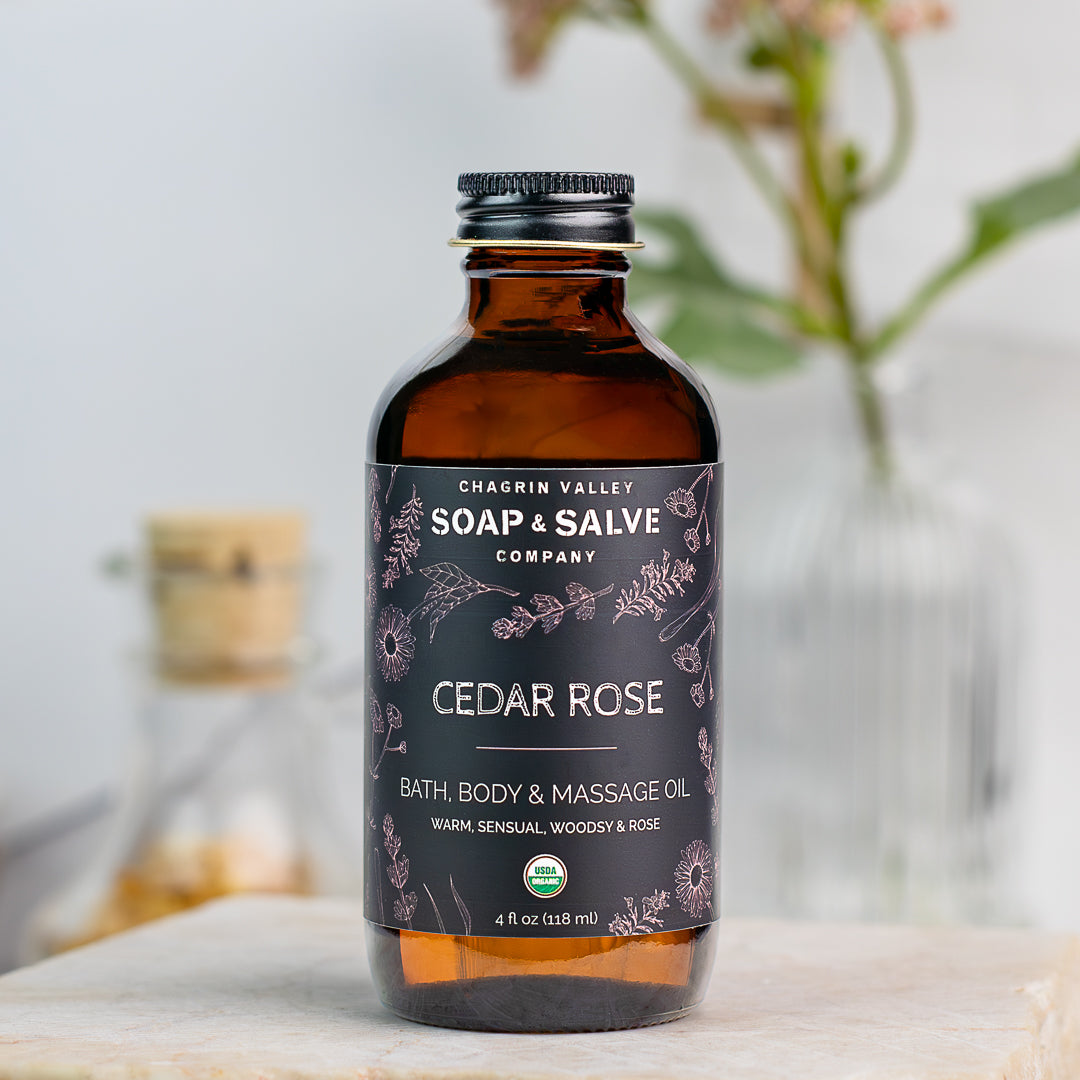
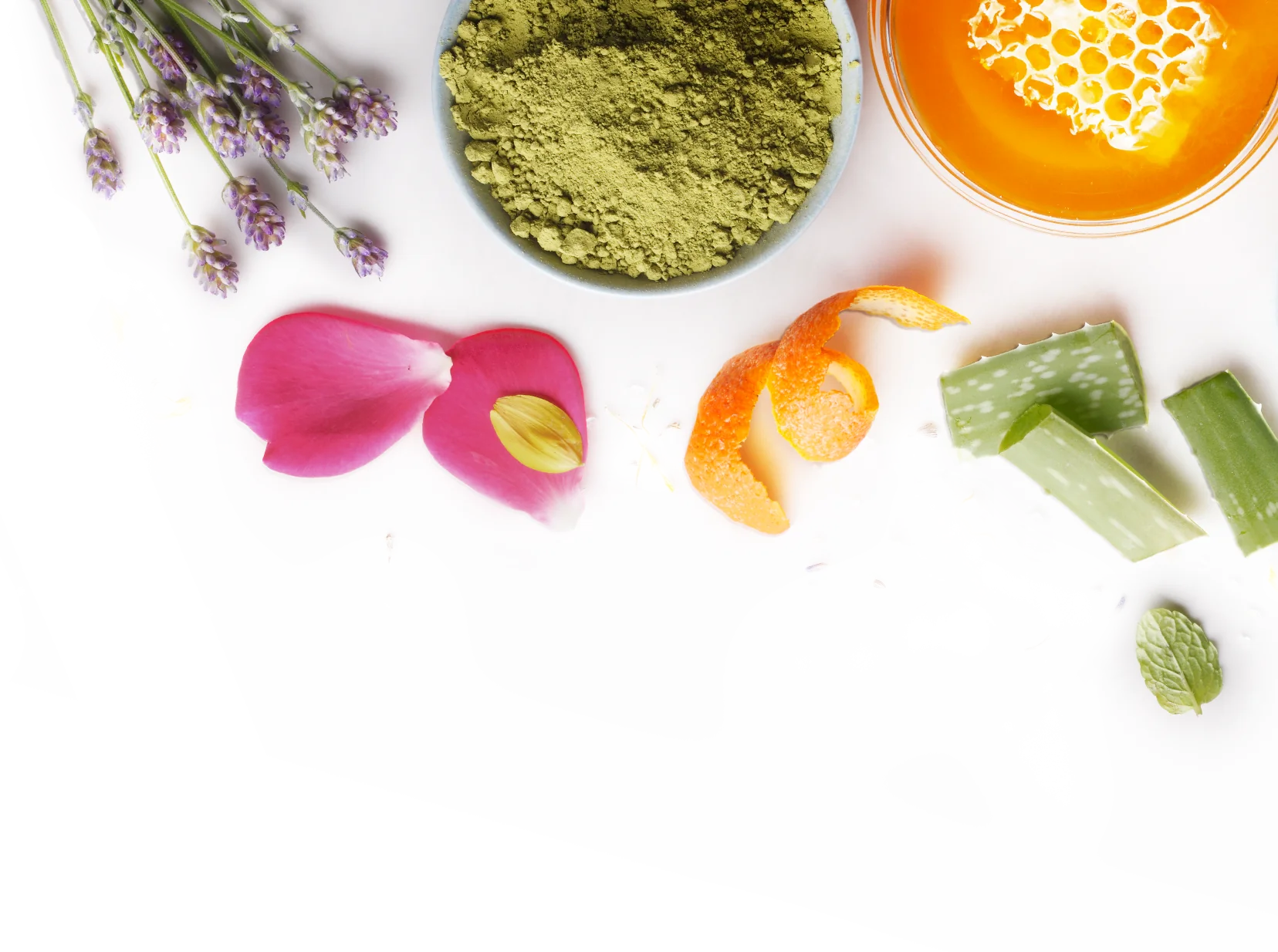
Wirksame Inhaltsstoffe zum Wohlfühlen
Das Ziel ist einfach: Nutzen Sie die Kraft und Einfachheit der Natur®, um Ihre Haut und Ihr Haar zu reinigen, zu beruhigen, zu heilen und zu schützen!
Unsere einzigartigen Formeln basieren auf feuchtigkeitsspendenden Ölen und Buttern, heilenden Pflanzenstoffen und reinen ätherischen Ölen. Wir wählen jede Zutat mit einem Ziel vor Augen: der bestmöglichen natürlichen Hautpflege für SIE!
Ausgewählte Zutaten

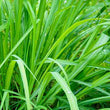
Organic Ätherisches Palmarosaöl
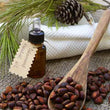
Organic Ätherisches Zedernholzöl
All Ingredients:
Organic Sunflower Oil infused with Organic Botanicals Lavender and Rose Petals
Häufig gestellte Fragen
Was sind ätherische Öle?
Was sind reine ätherische Öle?
Haben Sie schon einmal den Duft einer wohlriechenden Blume oder eines Krauts genossen? Der Duft entsteht durch die starken, aromatischen Verbindungen, die sogenannten ätherischen Öle, die in Blüten, Stängeln, Samen, Rinde, Wurzeln, Früchten und anderen Pflanzenteilen vorkommen. Für die Herstellung einer einzigen Flasche ätherischen Öls werden oft mehrere Pfund einer Pflanze benötigt.
Ätherische Öle verleihen Pflanzen nicht nur ihren einzigartigen Duft, sondern helfen auch dabei, Bestäuber anzulocken und Pflanzen vor Insekten und anderen Fressfeinden zu schützen.
Die chemische Zusammensetzung ätherischer Öle kann für manche Menschen wertvolle psychologische und physische aromatherapeutische Vorteile bieten.
Wichtig zu beachten: Um ein echtes ätherisches Öl zu erhalten, muss es ausschließlich physikalisch aus dem Pflanzenmaterial isoliert werden. Ätherische Öle werden NIEMALS mit Lösungsmitteln extrahiert.
Obwohl synthetische Duftstoffe oder „naturidentische“ Öle zu wesentlich geringeren Kosten erhältlich sind, bieten nur natürliche ätherische Pflanzenöle einen aromatherapeutischen Nutzen.

Was sind ätherische Öle (viel mehr Details)
Wie ätherische Öle gewonnen werden
Warum verwenden wir nur ätherische Öle echter Pflanzen?
Wenn Sie schwanger sind oder sich aus medizinischen Gründen in ärztlicher Behandlung befinden , wenden Sie sich vor der Verwendung ätherischer Öle bitte an Ihren Arzt.
Schwangerschaft & Kinder: Wir geben keine Auskunft über die Sicherheit ätherischer Öle während der Schwangerschaft oder bei Kindern, da die verfügbaren Informationen sehr unklar und oft widersprüchlich sind. Wenn Sie ätherische Öle während der Schwangerschaft oder bei Kleinkindern anwenden möchten, informieren Sie sich bitte selbst und konsultieren Sie vor der Anwendung Ihren Arzt, Ihre Hebamme oder Ihr medizinisches Fachpersonal.
View Answer Page
Sind die Zutaten und Produkte von Chagrin Valley vom USDA als biologisch zertifiziert?
Chagrin Valley Soap & Salve ist ein USDA-zertifiziertes Bio-Unternehmen

Der wichtigste Aspekt eines jeden Unternehmens sind seine Kunden. In der heutigen Welt voller irreführender Behauptungen, falscher Werbung und schlichter Täuschung versuchen Verbraucher oft, die Wahrheit über Körperpflegeprodukte und deren Inhaltsstoffe herauszufinden.
- Wir möchten, dass unsere Kunden wissen, dass wir uns bei allem, was wir tun, der Transparenz verpflichtet fühlen.
- Wir möchten, dass unsere Kunden wissen, dass wir es ernst meinen, wenn wir „biologisch“ sagen .
- Wir sind davon überzeugt, dass sich unsere Kunden als USDA-zertifiziertes Bio-Unternehmen keine Gedanken darüber machen müssen, ob wir tatsächlich zertifizierte Bio-Zutaten verwenden oder ob unsere Bio-Produkte wirklich biologisch sind.
- Deshalb haben wir uns dazu entschieden, ein zertifiziertes Bio-Unternehmen zu sein und die strengen Standards einzuhalten, die für die Bio-Zertifizierung erforderlich sind.
Einige meiner Lieblingsprodukte werden mit Zutaten hergestellt, die es nicht als Bio-zertifizierte Produkte gibt. Warum? Derzeit gibt es keine Standards für Inhaltsstoffe, die speziell in der Körperpflegeindustrie verwendet werden. Die Bio-Zertifizierung von Körperpflegeprodukten basiert auf den Bio-Lebensmittelstandards des National Organic Program des US-Landwirtschaftsministeriums (USDA).
Da wir jedoch ein zertifizierter Bio-Betrieb sind, sind wir verpflichtet, nachzuweisen, dass auch unsere „nicht-biologischen Zutaten“ ohne den Einsatz von giftigen Pestiziden, gentechnisch veränderten Organismen (GVO), Klärschlamm oder Bestrahlung hergestellt wurden.

Warum sind wir ein zertifiziertes Bio-Unternehmen geworden?
Was bedeuten all die Bio-Siegel?
View Answer Page
Haben Ihre Naturseifen- und Shampoo-Riegel ein Verfallsdatum?
Die kurze Antwort
Jein!
Obwohl handgemachte Naturseifen mit der Zeit in der Regel besser werden, empfehlen wir, unsere Seifen innerhalb von 12 Monaten nach dem Kauf zu verbrauchen. Unsere Duftseifen sollten innerhalb von 3 Monaten nach dem Auspacken verbraucht werden.
Obwohl die Seifen nach dieser Zeit nicht „verdorben“ sind, können Sie mit zunehmendem Alter der Naturseife einige Veränderungen feststellen.
- einige natürliche Farben können mit der Zeit verblassen
- Die Düfte aus rein natürlichen ätherischen Ölen verfliegen mit der Zeit
Bei unseren Probierriegeln erfolgen die Veränderungen von Farbe und Duft sogar noch schneller.
Diese kleinen Naturseifenstücke haben ein deutlich größeres Verhältnis von Oberfläche zu Volumen, wodurch ätherische Öle schneller verdunsten können. Der Duft kann jedoch beim Einseifen noch vorhanden sein.
Ich habe in meinem Schrank ein paar uralte Seifenstücke gefunden, die schon Jahre alt waren. Der Duft war verschwunden, aber der Schaum war unglaublich!
Die lange Antwort
Eine ausführlichere Diskussion finden Sie in unserem Blog „Haltbarkeit, Farbe und Duft einer Naturseife“.
So können Sie die Haltbarkeit verlängern
-
Naturseifen müssen atmen. Luft fördert das Aushärten der Seife und trägt zu ihrer länger anhaltenden Qualität bei. Seife sollte unverpackt in der Schachtel aufbewahrt oder in atmungsaktives Material eingewickelt werden. Enge Verpackungen verhindern die Verdunstung von Feuchtigkeit und sorgen so für feuchte Bedingungen.
- Unsere Seifen sind in atmungsaktiven, recycelbaren und nachhaltigen Verpackungen verpackt! Bewahren Sie Ihre handgemachten Naturseifen an einem trockenen, kühlen Ort auf, fern von Sonnenlicht, übermäßiger Hitze und Feuchtigkeit.
- Unsere Duftseifen, beispielsweise Lavendel-Rosmarin, können in einen Musselinbeutel, eine alte, saubere Socke oder in ein Stück Stoff gewickelt in Ihren Wäscheschrank oder Ihre Kommodenschublade gelegt werden, um Ihrer Wäsche und Kleidung einen herrlichen Duft zu verleihen, während sie auf ihren Gebrauch warten.
View Answer Page
Was bedeuten die verschiedenen Bio-Symbole?
Wir verwenden auf unserer Website zwei verschiedene Bio-Symbole.
Jedes Symbol hat eine einzigartige Bedeutung!
Bio-Siegel
Die Kennzeichnung „Bio-zertifiziert“ wurde vom US-Landwirtschaftsministerium (USDA) entwickelt und bezieht sich auf Bio-Aussagen und -Kennzeichnungen auf Lebensmitteln und Körperpflegeprodukten in den USA. Das USDA hat sehr strenge Richtlinien für den Anteil an Bio-Zutaten, der für eine Bio-Zertifizierung erforderlich ist. Andere Länder haben eigene Zertifizierungsverfahren, Anforderungen und Standards. Kennzeichnungskriterien und zulässige Inhaltsstoffe unterscheiden sich von denen in den USA.
 Das USDA Organic Logo Label kann auf Produkten verwendet werden, die den Standards der ersten beiden Stufen des Bio-Kennzeichnungssystems entsprechen, bei dem 95 – 100 % der Zutaten aus kontrolliert biologischem Anbau stammen.
Das USDA Organic Logo Label kann auf Produkten verwendet werden, die den Standards der ersten beiden Stufen des Bio-Kennzeichnungssystems entsprechen, bei dem 95 – 100 % der Zutaten aus kontrolliert biologischem Anbau stammen.
Die meisten unserer Nicht-Seifenprodukte fallen in diese Kategorie und tragen das USDA-Logo!
 Das Label „Certified Organic by OEFFA“ wird in unserem Unternehmen aus zwei Gründen verwendet …
Das Label „Certified Organic by OEFFA“ wird in unserem Unternehmen aus zwei Gründen verwendet …
Seifen und Shampoos: Diese Produkte enthalten aufgrund der Seifenherstellung mindestens 8 % Natriumhydroxid. Unsere Bio-Seife besteht zu 87 bis 92 % aus biologischem Anbau . Der USDA-Standard schreibt jedoch vor, dass ein Produkt zu 95 bis 100 % aus biologischen Inhaltsstoffen bestehen muss, um das oben abgebildete USDA-Siegel „Certified Organic“ tragen zu dürfen. Wir dürfen den Begriff „Bio-Seife“ auf dem Etikett nicht verwenden.
Wild geerntete Zutaten: Bei der Verwendung landwirtschaftlicher Zutaten (Zutaten biologischen Ursprungs), die nicht als biologisch zertifiziert sind, gelten die gleichen Kennzeichnungsregeln wie für Seife.
Die USDA-Regeln für eine ordnungsgemäße Kennzeichnung besagen, dass die Produkte das Logo der Zertifizierungsstelle, jedoch nicht das USDA-Bio-Logo tragen dürfen. Unsere USDA-Zertifizierungsstelle ist die OEFFA (The Ohio Ecological Food and Farm Association) . Ihr Logo ist auf unseren Bio-Seifen und -Shampoos abgebildet.
Warum verwenden manche Seifenhersteller den Begriff „Bio“ auf ihren Etiketten, obwohl dies gegen die Vorschriften verstößt? Klicken Sie hier, um mehr über die Vorschriften zur Bio-Kennzeichnung von Seife zu erfahren!
Inoffizielle Labels
Wir verwenden manchmal ein inoffizielles Symbol für Produkte mit „natürlichen“ Inhaltsstoffen, die die Kriterien der oben genannten Bezeichnungen nicht erfüllen. Sie finden dieses Symbol beispielsweise auf Produkten wie den Fußseifen mit schwarzer Tonerde aus dem Toten Meer, Bambuskohle und Luffa-Bimsstein sowie unseren Shampoo-Riegeln mit Schlamm & Tonerde und Rosmarin-Minz-Kohle.
Die Bio-Zertifizierung basiert auf den Standards des ökologischen Landbaus und der Landwirtschaft. Daher basiert die Liste der zulässigen nichtlandwirtschaftlichen Inhaltsstoffe (wie Ton, Salz, Schlamm usw.) auf Rohstoffen, die in der Landwirtschaft oder Lebensmittelproduktion verwendet werden. Leider werden Inhaltsstoffe wie bestimmte Tone, Bimsstein, Schlamm aus dem Toten Meer und Bambuskohle weder in der Landwirtschaft noch in der Lebensmittelproduktion verwendet und erscheinen daher nicht auf der Liste.
Obwohl es lang erscheinen mag, ist dies wirklich eine sehr kurze Beschreibung. Für detailliertere Informationen lesen Sie bitte „ Was bedeuten die verschiedenen Bio-Siegel? “
View Answer Page
